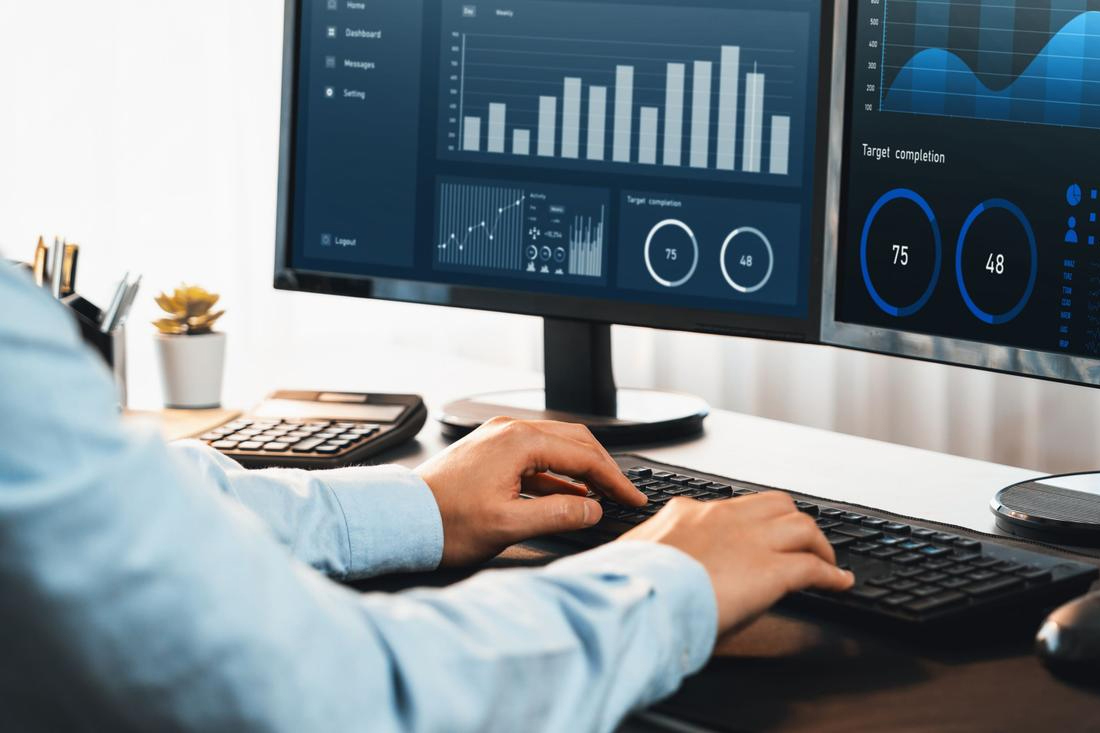Big Data and Industry 5.0: Turning Data into Actionable Insights

Big Data and Industry 5.0: Turning Data into Actionable Insights
July 9, 2024
Technological evolution has shaped the way industries operate and Industry 4.0 has been particularly marked by the phenomenon of process automation and digitalisation. But innovation didn’t stop there: the emergence of Industry 5.0 promises to take digital transformation to a new level.
The focus is now on collaboration between humans and machines, and Big Data is playing a leading role in this. Let’s see why.
Industry 5.0: The New Era of Collaboration
As its name suggests, Industry 5.0 is an evolution of Industry 4.0. Going back a in time to better understand the concept, the Fourth Industrial Revolution was triggered by digitalisation in companies, automation and the integration of technologies into industrial processes, such as Artificial Intelligence and the Internet of Things (IoT).
Basically, all industrial revolutions are based on the emergence of a disruptive technology. But what, then, is awakening a new industrial revolution? In this case, Industry 5.0 is an improved version of the previous one, which promotes a synergy between human intelligence and intelligent machines.
What changes with Industry 5.0?
While Industry 4.0 focused on modernising companies, Industry 5.0 focuses on people. These are its main transformations:
– Collaboration between humans and machines: In Industry 5.0, humans and robots work side-by-side, i.e. technology is used to complement human skills and not replace them. This allows workers to focus on more complex and creative tasks, while machines are left in charge of repetitive activities.
– Mass customisation: The ability to combine automation with human intervention makes it possible to mass-produce customised products, which means that factories can meet specific customer demands without losing the efficiency of large-scale production.
– Sustainability: Industry 5.0 emphasises sustainability, promoting production practices that minimise environmental impact and encourage social responsibility. These practices include using sustainable materials, reducing waste and creating safer and healthier working environments.
– Advanced Technologies: The use of emerging technologies such as Artificial Intelligence (AI), Machine Learning (ML), the Internet of Things (IoT), Big Data and Business Intelligence tools are fundamental to Industry 5.0. These technologies make it possible to analyse data in real time, optimise processes and make informed decisions.
– Focus on the Worker: Unlike Industry 4.0, which was often seen as a threat to jobs due to automation, Industry 5.0 values the human contribution. The aim is to create an environment where machines perform tasks that complement and amplify human skills, creating a more capable workforce.
Big Data: The Basis for Decision Making
Big Data comprises the set of technologies and practices used to collect, process and analyse large volumes of data that are created at an ever-increasing speed and variety. Its main objective is to extract valuable information from this data to help make strategic decisions.
In Industry 5.0, Big Data is a key element in monitoring and optimising operations in real time.
Machine Learning in Big Data
Machine Learning (ML) is a sub-area of artificial intelligence that allows systems to learn and make predictions or decisions based on data. When applied to Big Data, ML makes it possible to discover complex patterns and turn them into insights that would be impossible to identify manually. In the context of Industry 5.0, some of the main benefits of the alliance of Machine Learning and Big Data include:
– Fault prediction and predictive maintenance.
– Process optimisation.
– Mass customisation.
– Improved product quality.
Turning Data into Actionable Insights
Data is the key to extracting valuable information for the business, but it’s not always a simple process to turn it into insights that help us make decisions – you need an ecosystem that includes efficient data collection, adequate storage and advanced analysis.
– Data collection: The integration of IoT sensors and other data sources is essential to gather relevant information.
– Data Storage and Management: Utilising Big Data platforms makes it possible to securely and efficiently store large volumes of data. Technologies such as Hadoop and Spark are often used for this purpose.
– Data Analysis: Applications of Machine Learning techniques make it possible to explore data and identify patterns. Tools such as TensorFlow, PyTorch and Scikit-Learn are popular in this field.
– Visualisation and Interpretation: Using data visualisation tools such as Tableau and Power BI makes it possible to present insights in a clear and understandable way.
Conclusion
Industry 5.0 represents a new industrial era in which collaboration between humans and intelligent machines will take centre stage. Technology will now be at the service of human beings, giving rise to a new human-machine synergy.
Are you ready to take the next step and ally yourself with the power of innovation? Talk to us!